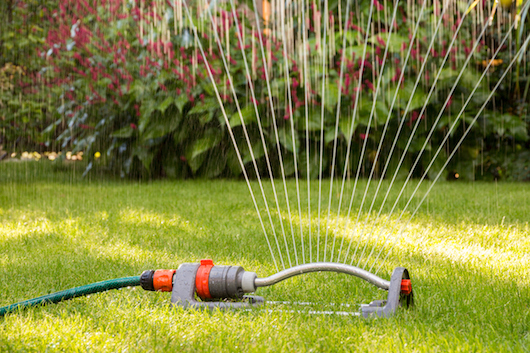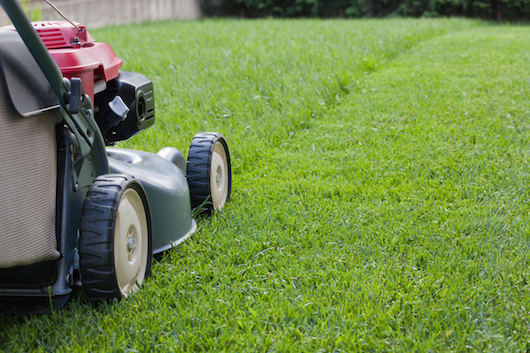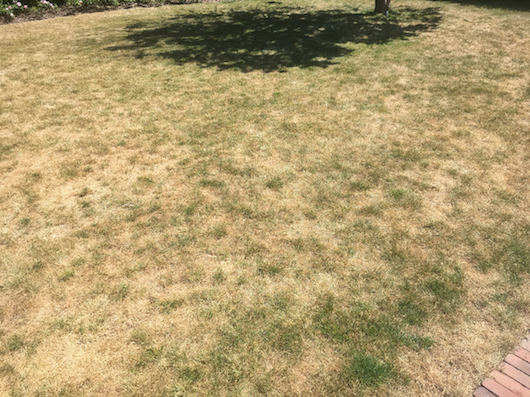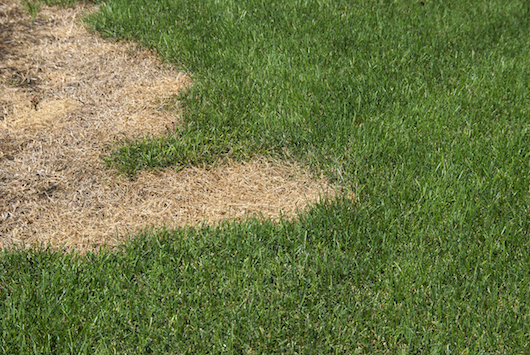
Best Practices for Mowing and Watering
Mowing and watering your lawn are the most basic elements of every homeowner’s turf-care routine. By following a few easy guidelines, you can get the most out of your mowing and irrigation efforts.

Setting out the sprinkler during dry weather seems pretty straightforward. The timing and duration of your sprinkling sessions are key to making your watering effective and efficient. Lawns should be watered in the early morning if possible. Irrigation in the afternoon heat can intensify the sunlight and actually damage turf grass. Watering close to dusk leaves your lawn wet during overnight hours, which invites a variety of fungal disease. The best schedule for summer irrigation is a few early-morning watering sessions each week that thoroughly soak your lawn, delivering needed water all the way to your turf’s roots.
By promoting a thicker, healthier lawn with spring fertilization, you’ll make your turf better able to fend off weeds, insects and disease throughout the growing season!

Your mowing process, especially during the summer, should be mindful of the fact that turf blades are an important functioning part of your lawn. Unlike a haircut that removes dead cells, mowing grass removes part of your turf’s “power plant.” Cutting too low to the ground can weaken your turf by reducing the amount of food-producing grass blades. In addition to weakening turf plants, mowing too low increases the level of the sun’s heat on your soil’s surface. This can stress your lawn by drying it out and weakening it to weed and disease invasions. For the best results, be sure to only remove one-third of the blade length with each mowing.
With the right mowing and watering routines, your lawn will be a shining green oasis throughout the long, hot summer!
Disease or Summer Stress?
Don’t mistake the symptoms of a drought-stressed lawn for those caused by a summer lawn disease.
Drought-stressed lawns may have a bluish cast, and in severe cases, they’ll go into a dormant state and turn brown. The best way to be sure your lawn isn’t suffering from drought stress is to keep it well watered.

Disease symptoms usually include spotting on the grass blades, and the spots (or lesions) will vary in size and color. Lawn diseases work outward as they spread, creating areas with serious damage bordered by areas with minor damage.

A preventative program with regular inspections will help control many of the most common disease problems your lawn might encounter. If an infectious disease does attack your lawn, it should be diagnosed without delay to prevent spreading and further damage.

| Did you find this newsletter to be useful or interesting? If so, feel free to forward to a friend or click the following to share on Twitter or Facebook. |
